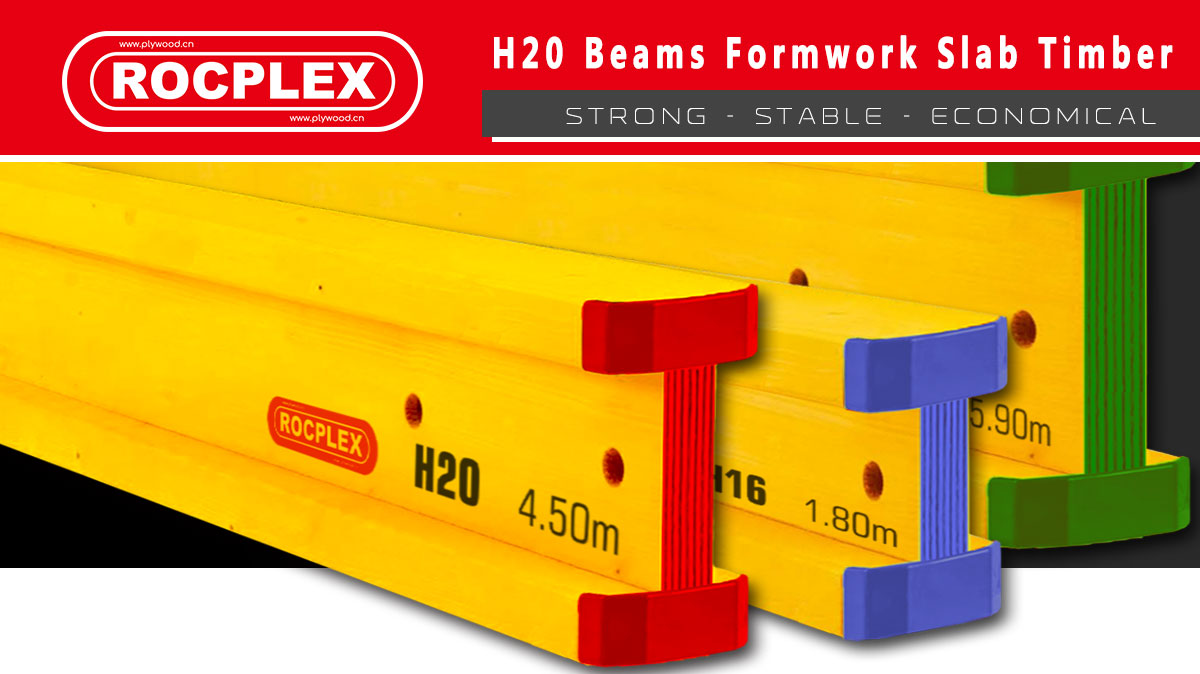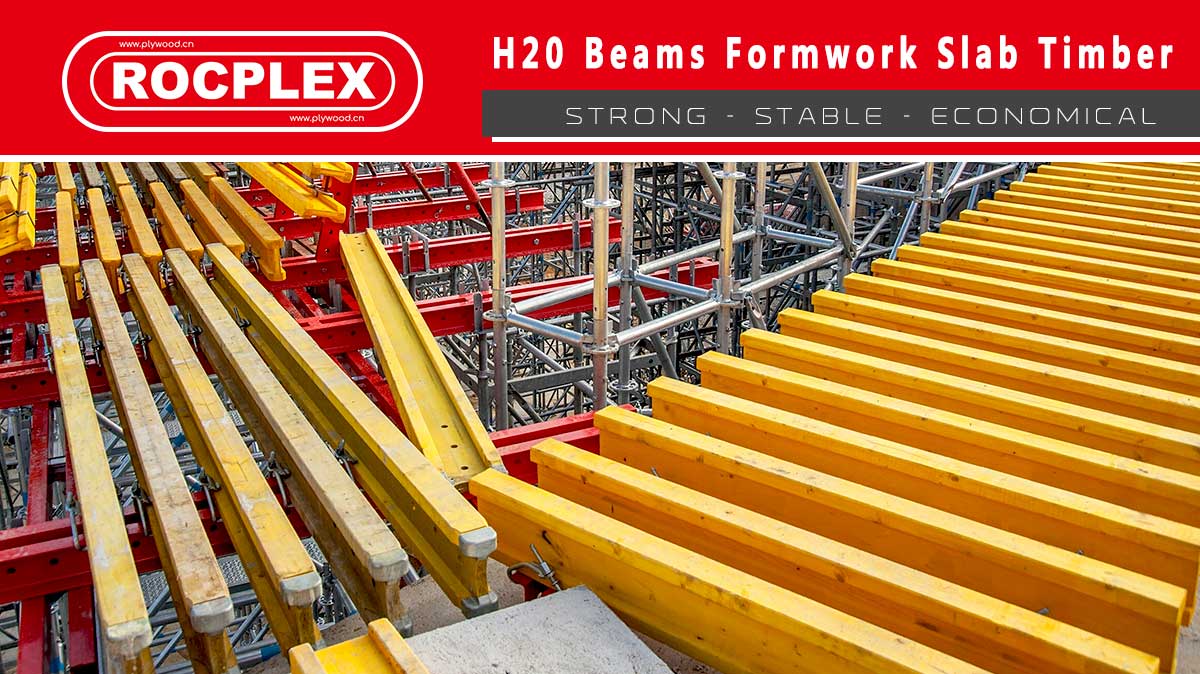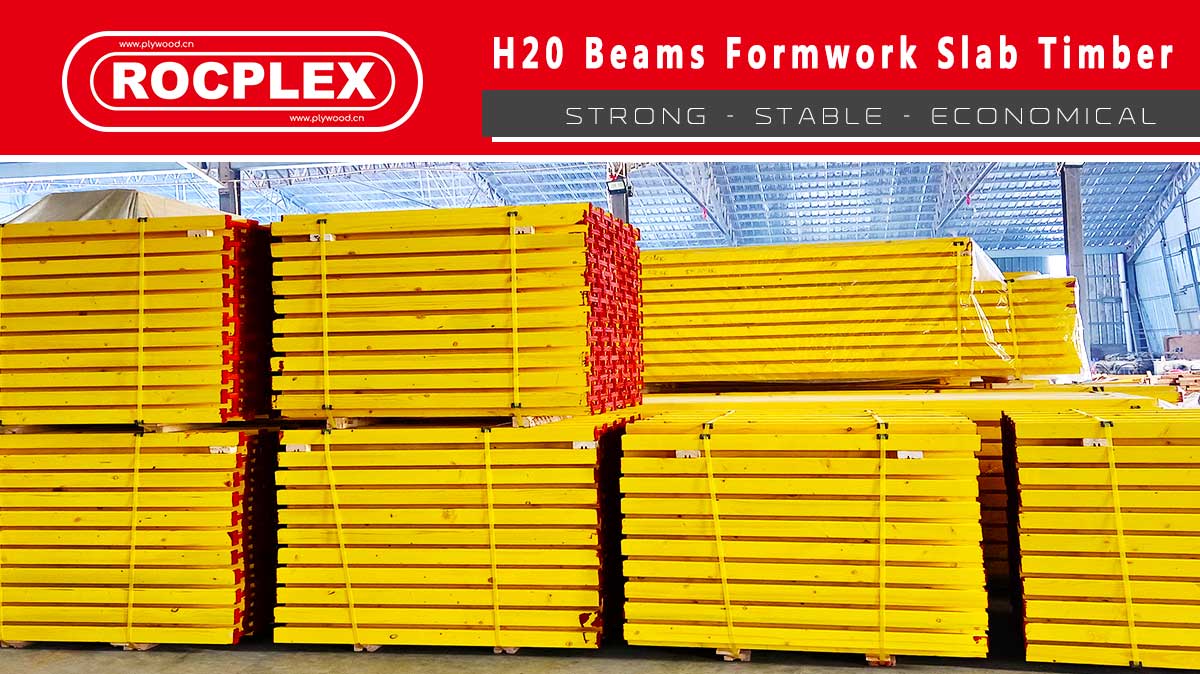What is H20 Beam?
The H20 beam, a pivotal element in contemporary construction, represents a significant leap in building technology. Comprising high-quality wood and reinforced with a robust web of steel, these beams are known for their durability, flexibility, and cost-effectiveness. Their unique ‘I’ shape – reminiscent of the classic I beam – allows for greater load-bearing capacity, making them ideal for a wide range of construction projects, from residential buildings to large-scale commercial structures. The adaptability of H20 beams extends beyond traditional uses, as they are increasingly incorporated into specialized construction scenarios such as slab beams, providing tailored solutions to complex architectural challenges.

Exploring the Versatility of H20 Beams in Modern Construction
The Structural Advantage
H20 beams, with their I-beam-like structure, offer a unique blend of strength and flexibility, crucial for modern construction demands. Their design allows for efficient distribution of weight and stress, ensuring stability and safety in various building projects.
Cost-Effectiveness and Sustainability
One of the key attractions of H20 beams is their cost-effectiveness. These beams, often a blend of engineered wood and steel, provide a more affordable alternative to traditional solid steel or concrete beams. Furthermore, their manufacturing process is geared towards sustainability, making them a popular choice in eco-conscious construction projects.
Innovation in Design and Application
The innovative design of H20 beams allows architects and engineers to push the boundaries of traditional construction. These beams can be used in a variety of applications, from supporting the framework of large commercial buildings to intricate designs in residential properties.
The Growing Importance of Beam Technology in Construction
Advancements in Beam Engineering
Recent advancements in beam technology, including H20 beams, have revolutionized how structures are designed and built. The development of stronger, more flexible beams has opened new possibilities in architectural design and construction efficiency.
The Role of Slab Beams and I Beams
In addition to H20 beams, slab beams and I beams continue to play a vital role in construction. These synonyms of beam technology each have unique properties that make them suitable for specific uses, complementing the versatility of H20 beams in the industry.
H20 Beam: A Future-Forward Approach in Building
Embracing Technological Integration
The integration of technology with H20 beams represents the future of construction. From digital modeling to advanced material science, these beams are at the forefront of a more efficient, sustainable building process.
Predicting Future Trends and Challenges
As the construction industry evolves, H20 beams are expected to adapt and meet future challenges. This includes addressing environmental concerns, enhancing material properties, and innovating in response to changing architectural trends.
Innovative Applications of H20 Beams in Construction
Revolutionizing Residential Building
H20 beams are making a significant impact in residential construction. Their ability to span long distances without support columns opens up new possibilities for open-plan designs, creating more spacious and flexible living areas. This innovation is particularly crucial in urban settings where space is at a premium, allowing architects to design more creatively within confined spaces.
Transforming Commercial Structures
In commercial construction, H20 beams offer unparalleled benefits. Their robust structure is ideal for large-scale projects such as office buildings, warehouses, and shopping centers. These beams provide the necessary support for heavy loads and high-traffic areas, ensuring safety and durability.
Enhancing Aesthetic Appeal
Apart from their structural advantages, H20 beams contribute significantly to the aesthetic appeal of buildings. Their sleek, modern look can be left exposed in designs, adding an industrial yet elegant touch to interiors. This architectural trend is gaining popularity, especially in spaces where a blend of functionality and style is desired.

The Synergy of H20 Wood Beams and Green Building Practices
Promoting Sustainable Construction
The use of H20 beams aligns with the growing trend of sustainable construction. Their composition, often involving engineered wood, supports environmentally responsible building practices. The production of these beams typically requires less energy and produces fewer carbon emissions compared to traditional steel or concrete beams.
Energy Efficiency and Eco-Friendly Materials
Buildings constructed with H20 beams often exhibit improved energy efficiency. The natural insulating properties of wood, combined with the strength of steel, contribute to better temperature regulation, reducing the need for extensive heating or cooling systems. Moreover, the materials used in H20 beams are often sourced from sustainable forests, further cementing their eco-friendly credentials.
The Future of Eco-Conscious Building
As the construction industry moves towards more sustainable practices, H20 beams are expected to play a pivotal role. Their adaptability to various building designs, along with their environmental benefits, positions them as a key component in future green building initiatives.
Challenges and Solutions in Implementing H20 Beam Technology
Addressing Cost and Availability Concerns
While H20 beams offer numerous advantages, challenges such as cost and availability can be barriers to their widespread adoption. To address this, manufacturers and suppliers are working towards more efficient production methods and wider distribution networks to make these beams more accessible and affordable.
Overcoming Technical Limitations
The technical aspects of working with H20 beams, such as specific design requirements and installation techniques, can pose challenges for construction teams. Ongoing training and the development of specialized tools and equipment are essential to overcome these hurdles and fully leverage the benefits of this technology.
Adapting to Regulatory Changes
As building codes and regulations evolve to accommodate new technologies and materials, it’s crucial for the construction industry to stay informed and adapt. Ensuring compliance with these changing standards is vital for the successful implementation of H20 beam technology in construction projects.
The Role of Research and Development in Advancing H20 Beam Technology
Innovative Material Combinations
Research and development play a crucial role in enhancing the properties of H20 beams. By experimenting with different material combinations and treatments, scientists and engineers are working to improve the strength, durability, and sustainability of these beams.
Advancements in Beam Design
Ongoing research is also focused on optimizing the design of H20 beams. This includes refining their shape and structure to maximize load-bearing capacity and minimize material use, leading to more cost-effective and environmentally friendly construction solutions.
Integration with Emerging Technologies
The future of H20 slab beam technology is closely tied to advancements in related fields, such as digital fabrication, smart building systems, and sustainable material science. Integrating these technologies with H20 beam construction will lead to smarter, more efficient, and more sustainable buildings.
The Global Impact of H20 Beams on the Construction Industry
Expanding Reach in International Markets
H20 beams are not just a phenomenon in local markets; their influence is expanding globally. As more countries adopt modern building practices, the demand for these versatile beams is increasing, particularly in regions experiencing rapid urbanization and infrastructure development.
Cultural and Regional Adaptations
Different regions have unique architectural styles and construction requirements. H20 beams are being adapted to these diverse needs, demonstrating their versatility across various cultural contexts. This adaptability ensures that they remain relevant and beneficial in a wide range of international construction projects.
Contributing to Global Construction Standards
The rising popularity of H20 beams is influencing global construction standards. As more projects incorporate these beams, they are becoming a benchmark for quality and efficiency in the construction industry, setting new standards for building practices worldwide.
Educational and Training Initiatives for H20 Beam Technology
Fostering Industry Knowledge
To maximize the potential of H20 beams, educational and training initiatives are crucial. Universities, technical schools, and industry associations are offering courses and workshops to educate architects, engineers, and construction professionals about the benefits and best practices of using these beams.
Collaboration with Academic Institutions
Collaborations between industry leaders and academic institutions are fostering innovation in H20 beam technology. These partnerships are vital for conducting research, developing new applications, and ensuring the next generation of construction professionals is well-versed in this technology.
Certification and Standardization
Standardization and certification programs for H20 timber beam technology ensure quality and safety in construction. These programs help maintain high standards across the industry, building trust among professionals and clients alike.

Looking to the Future: Innovations and Predictions
Technological Integration and Automation
The future of H20 beams is closely linked with technological advancements. Automation in manufacturing and integration with digital design tools like Building Information Modeling (BIM) are expected to further enhance the efficiency and precision of H20 beams construction.
Material Science Breakthroughs
Ongoing research in material science promises to bring new innovations to H20 beam technology. The development of lighter, stronger, and more sustainable materials will likely lead to even more efficient and environmentally friendly construction methods.
Responding to Climate Change
As the world grapples with climate change, the construction industry is under pressure to reduce its environmental impact. H20 beams, with their sustainable attributes, are well-positioned to play a significant role in this transition, helping to build greener and more resilient structures.
Building a Stronger Future with H20 Beams
In summary, H20 beams represent a significant advancement in the field of construction, offering a blend of strength, versatility, and sustainability. From revolutionizing residential and commercial building designs to contributing to global construction standards, these beams have proven their worth as a key component in modern construction practices. As the industry continues to evolve, the role of H20 beams will undoubtedly expand, driven by ongoing research, technological integration, and a growing emphasis on sustainable building practices. The future of construction looks brighter and more robust with H20 beams at its core.
FAQs About H20 Beams
What is beam formwork?
Beam formwork is a construction process where temporary molds are used to shape and support concrete beams until they harden. It’s crucial for maintaining the beam’s shape, integrity, and alignment during the curing process.
Which is stronger, H beam or I beam?
Strength depends on specific design aspects, but H beams generally offer better load distribution due to their wider flanges, making them stronger against bending and shear forces.
Why are H beams so strong?
H beams owe their strength to their ‘H’ shaped cross-section, which optimally distributes weight and stress. This shape enhances their load-bearing capacity and resistance to bending and deformation.
Post time: Feb-13-2024

